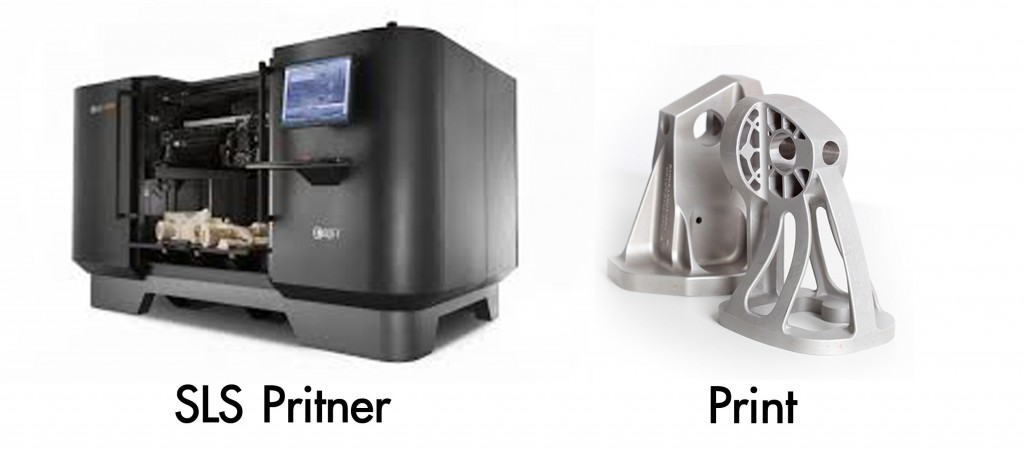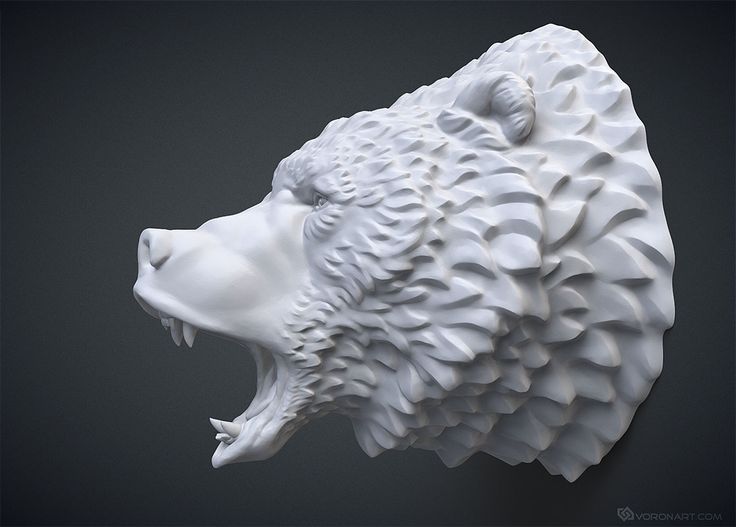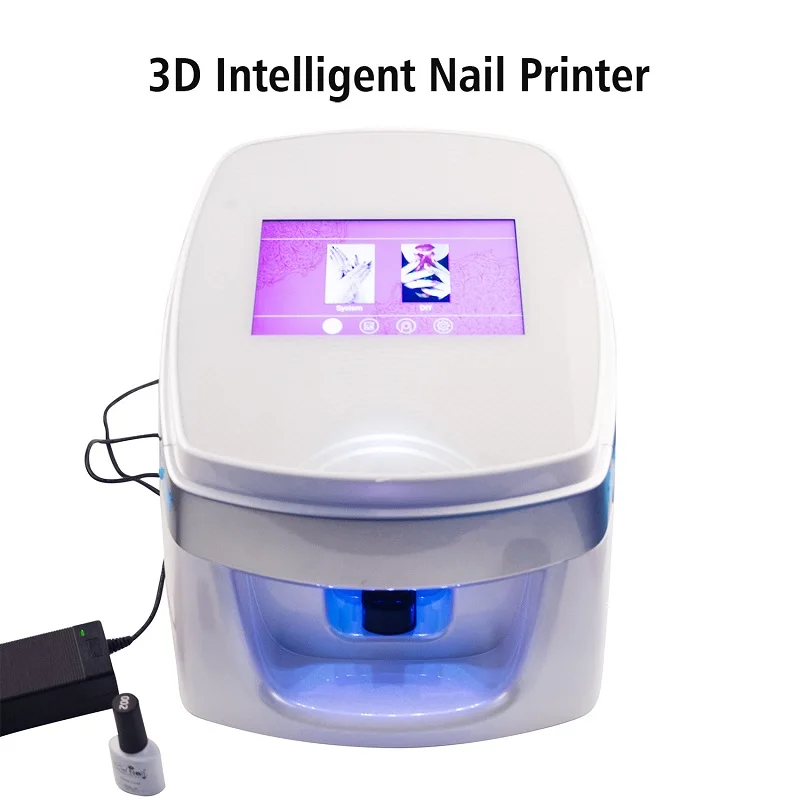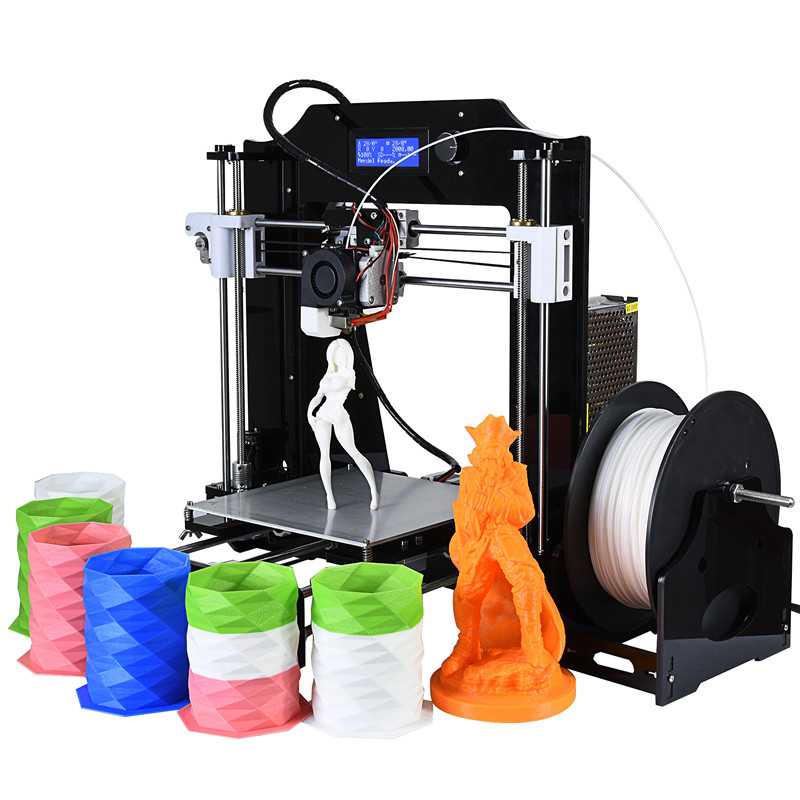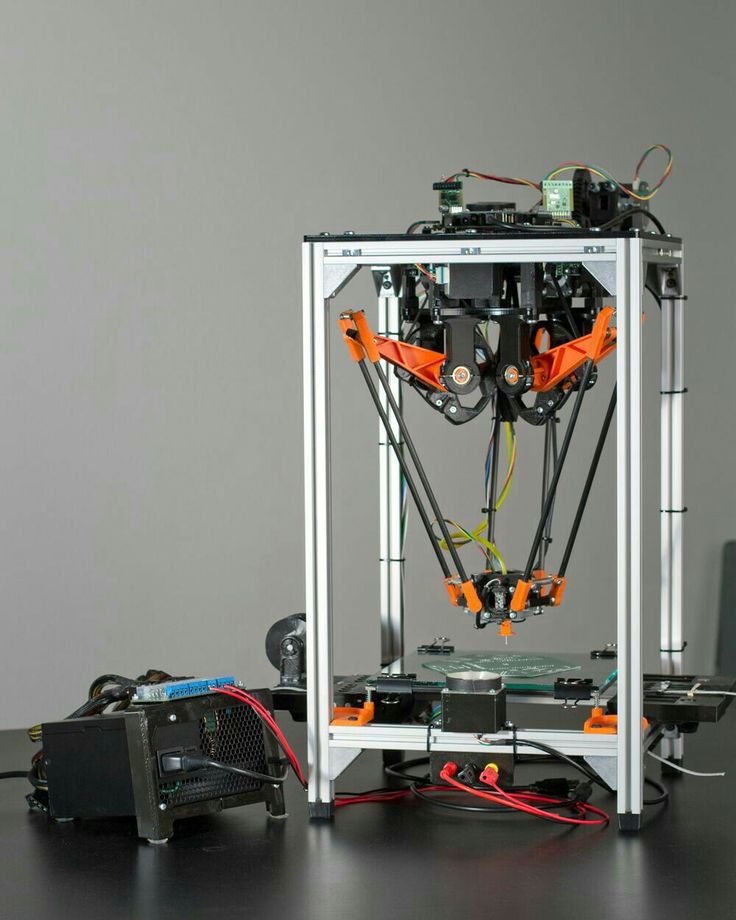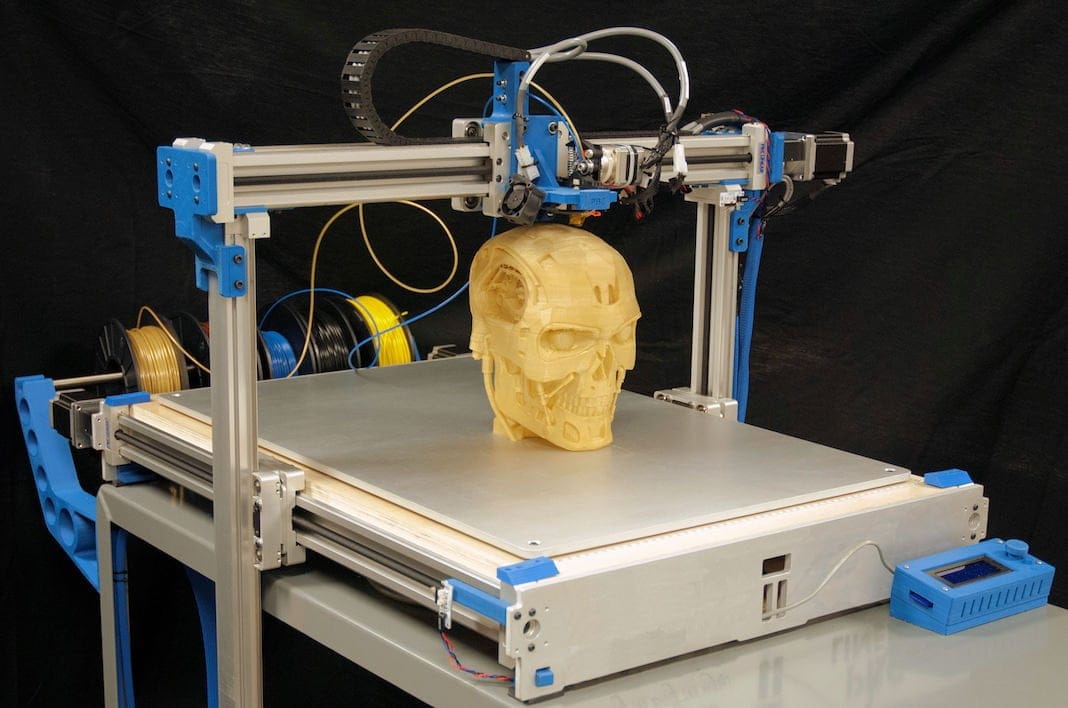Best sls 3d printer
The Best SLS 3D Printers of 2022
SLS 3D Printing uses a high-power laser to sinter and fuse the polymer powder together and build solid parts layer by layer, which can produce parts that are strong, durable, finely detailed, and flexible. SLS printer manufacturers are delivering various types of SLS printers to the market and boast that selective laser sintering outperforms injection molding, so in this article, let's learn and discover the best SLS printers of 2022.
Image Source: 3Dnatives
Part 1. Why Choose SLS
Before talking about which are the best SLS 3D printers in the industry, there are some reasons that SLS is worth considering when choosing the right manufacturing technology to create functional parts.
1. High quality products. SLS can create parts with high mechanical properties and precision that can reach end-use quality.
2. Support-free. SLS printing doesn't need supports in the most cases, which means it is suitable for design and produce parts with complex shapes and geometries.
3. Sustainable. Much of the loose powder in depwodering process can be recycled, which means materials and maintenance cost is lower.
4. Material flexibility. Compared with SLA 3D Printing, there are a wide range of materials such as PA, PPGB, HP, etc., while blending materials is available according to specific requirements on product toughness.
5. Multiple post-processing available. To get detailed surfaces and unique colors, SLS printed parts can be processed with sand blasting, grinding, and painting, etc.
Image Source: EOS
Part 2. Top 10 SLS Printer
1. Formlabs Fuse 1
Formlabs SLS printers are highly suitable for independent manufacturing and prototyping, and Formlabs Fuse 1 is one of the top recommendations.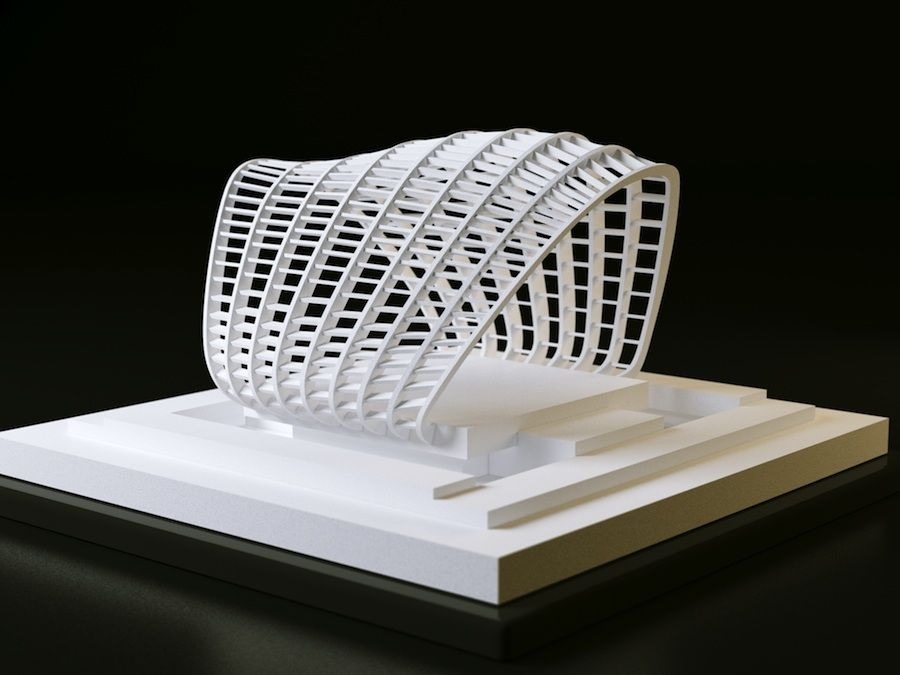 Affordable, reliable, and compact selective laser sintering 3d printer are tags of Fuse 1. Formlabs Fuse 1 price starting from $18,499. Featuring a full color touchscreen interface, it delivers a user-friendly experience so that users can follow every step of printing easily. Fuse 1 is designed for high productivity. Compatible with removable build chamber, which enables Fuse 1 keep printing and reduce downtime. Besides, the leading cooldown times allows the next printing in a short time. Working with Fuse 1 in which hardware, software, and materials are developed and validated together, optimizing printed parts quality and cost.
Affordable, reliable, and compact selective laser sintering 3d printer are tags of Fuse 1. Formlabs Fuse 1 price starting from $18,499. Featuring a full color touchscreen interface, it delivers a user-friendly experience so that users can follow every step of printing easily. Fuse 1 is designed for high productivity. Compatible with removable build chamber, which enables Fuse 1 keep printing and reduce downtime. Besides, the leading cooldown times allows the next printing in a short time. Working with Fuse 1 in which hardware, software, and materials are developed and validated together, optimizing printed parts quality and cost.
Image Source: Formlabs
2. Sintratec Kit
It is not easy to find the excellent desktop SLS printer, however, Sintratec Kit is the one we recommend. The Sintratec Kit is the ideal solution for both entry-level additive manufacturing hobbyists and professional industrial users. The printer is easy to understand and operate. Freeform, movable parts, multiple nested objects can be printed in high accuracy and resolution by the Sintratec Kit. Besides, the printer supports multiple materials so that it can meet the professional need from various industries, such as medical, education, engineering, etc.
The printer is easy to understand and operate. Freeform, movable parts, multiple nested objects can be printed in high accuracy and resolution by the Sintratec Kit. Besides, the printer supports multiple materials so that it can meet the professional need from various industries, such as medical, education, engineering, etc.
Image Source: Sintratec
3. Sintratec S2
Besides Sintratec Kit, there another SLS printer that we should mention of the Sintratec printer family, that is Sintratec S2. The printer offers the all-in-one solution by integrating material preparation, printing and depowdering in a closed and semi-automatic system, which minimizes downtimes and optimizes cost. Through the efficient screening and mixing function in the Sintratec Material Handling Station, there is no need to use additional equipment for reprocess used material into ready-for-printing material, which ensures a clean working environment and good for health. The Sintratec S2 price is affordable, please check through the website and get quote.
The Sintratec S2 price is affordable, please check through the website and get quote.
Image Source: Sintratec
4. Sinterit NILS 480
Speaking of industrial SLS 3D printer, Sinterit NILS 480 can meet your needs. Equipped with the Galvo laser scanning system, The NILS 480 can print fast and efficiently, which means most printing tasks can be done within 24 hours. Besides, with continuous printing and automatic powder dispensing systems, efficiency is improved. You don't have to repeat the printing preparation process and powder filling by the continuous printing systems, while all you need to do is filling the container with materials and let the printer manage the rest of the process with automatic powder dispensing systems. It's an ideal win-win solution.
Image Source: Sinterit
5. Sinterit Lisa X
Sinterit Lisa X, featuring great printing quality, is a large SLS printer with a build volume of 130 x 180 x 330 mm.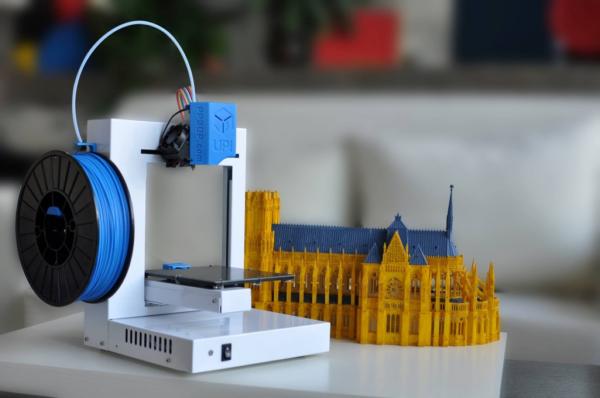 The printing speed of the Lisa X is guaranteed as it can print up to five print beds per week. The printer is compatible with a wide range of materials, which means the range of applications and prototypes are enormous. To enhance efficiency and productivity, the printing and cooling time of the Lisa X is optimizing so that users can create more parts in short lead time. You don't have to compromise on quality to prototype faster with Sinterin Lisa X.
The printing speed of the Lisa X is guaranteed as it can print up to five print beds per week. The printer is compatible with a wide range of materials, which means the range of applications and prototypes are enormous. To enhance efficiency and productivity, the printing and cooling time of the Lisa X is optimizing so that users can create more parts in short lead time. You don't have to compromise on quality to prototype faster with Sinterin Lisa X.
Image Source: Sinterit
6. 3D Systems ProX SLS 6100
Production-grade SLS 3D printer from 3D Systems, the ProX SLS 6100 on one of the best- in class that delivers high quality parts and fast build times. The ProX SLS 6100 is the automated production tool that brings versatility to various applications, such as functional prototyping, impact and temperature resistant durable parts, reduced weight production parts, and machinery components, etc.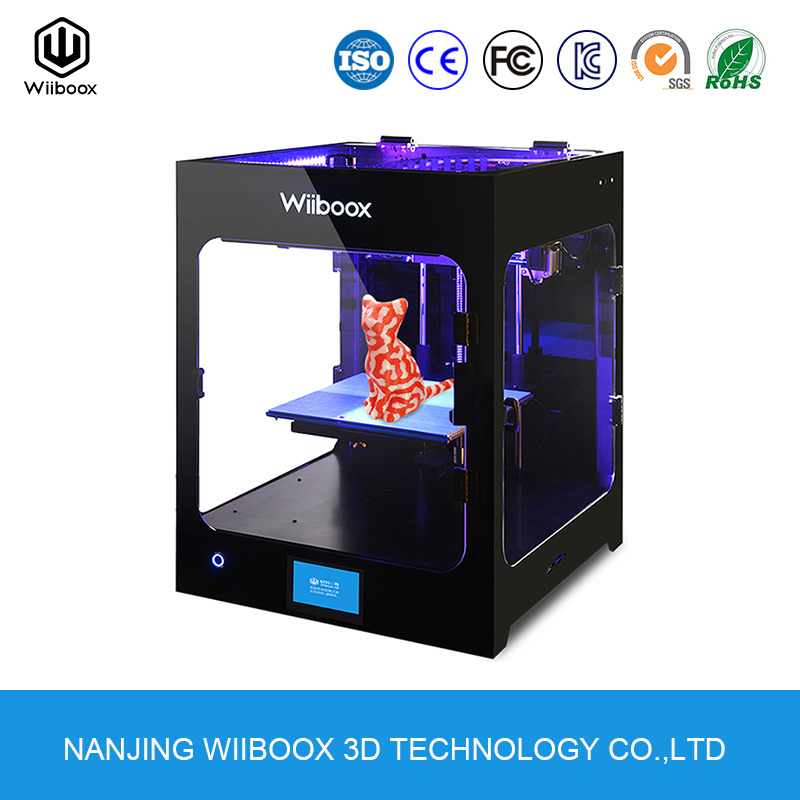 Equipped with new air-cooled laser, the printer provides production quality parts in a fast, efficient and versatile process. The ProX SLS 6100 is being able to print any design without using supports or post-processing, which enables users to reach production goals easily.
Equipped with new air-cooled laser, the printer provides production quality parts in a fast, efficient and versatile process. The ProX SLS 6100 is being able to print any design without using supports or post-processing, which enables users to reach production goals easily.
Image Source: 3D Systems
7. Wematter Gravity
Easy to use, plug & play, no additional service plans are the tags of Wematter Gravity SLS printer. Imagine every time we print an object, it would take really long time to wait and the results aren't always satisfying. Printing with Wematter Gravity, it saves working time while prints strong parts. A reliable printer can print high quality parts without any production interruptions. User can print parts easily without the need for powder rooms, dedicated staff and complex settings, Wematter Gravity is reliable and accessible, and being able to recues cost in every production process.
Image Source: Wematter
8. Prodways ProMaker P1000 X
Prodways ProMaker P1000 X
If you are looking for a SLS printer with fast printing speed and large production volume, and at the mean time you don't need to compromise on product quality, Prodways Promaker P1000 X is what you need. Featuring large building platform, high productivity, advanced thermal control, the printer can create SLS parts with high precision, high strength cost-effectively. Besides, accuracy and flexibility are advantages as well. The printer owns fine laser beam, new advanced real-time slicer, 24 points thermal field control points which delivers accuracy, and it is easy to implement and switch between the available materials which offers flexibility.
Image Source: Prodways
9. EOS FORMIGA P 110 Velocis
Sometimes, it is not easy to control the costs when you processing a project. With EOS Formiga P 110 Velocis, the only running costs are the material and electricity, which result in lowering the operating costs. Moreover, binding agents are not required. Printed parts are application-ready after unpacking and blasting, which means there are no post-processing steps are required as the Formiga P 110 Velocis delivers high reliability and efficiency. Besides, the Formiga P 110 Velocis is extremely user-friendly, you don't have to spend too much time on figuring it. Thus, the printer enables you to expand business model easily.
Moreover, binding agents are not required. Printed parts are application-ready after unpacking and blasting, which means there are no post-processing steps are required as the Formiga P 110 Velocis delivers high reliability and efficiency. Besides, the Formiga P 110 Velocis is extremely user-friendly, you don't have to spend too much time on figuring it. Thus, the printer enables you to expand business model easily.
Image Source: EOS
10. Sindoh S100
Sindoh S100 offers sustainable and innovative addictive manufacturing solutions to the industry. From rapid prototyping to mass production, large SLS printer Sindoh S100 is capable of meeting every need with the satisfying build volume of 510 x 510 x 500 mm and the extreme fast printing speed of 4.7 L/h. You can accelerate project and production lead time as easy as possible. With 21.5" full color touch screen, you can preset and operate the printer smoothly. The printer is compatible with material packages PA12, PA11, TPU, and PP to deliver a fully open and flexible printing process. Furthermore, the S100 is the first commercially available SLS printer with Materialise’s latest innovative process technology. Sindoh S100 is totally worth considering if your budget is not limited.
The printer is compatible with material packages PA12, PA11, TPU, and PP to deliver a fully open and flexible printing process. Furthermore, the S100 is the first commercially available SLS printer with Materialise’s latest innovative process technology. Sindoh S100 is totally worth considering if your budget is not limited.
Image Source: Sindoh
After introducing different types of SLS 3D printers in the market, it is common that if you think SLS printers are expensive than FDM/ SLA printers, so that you may think it is a burden to afford a SLS printer even the technology brings functional parts that resemble end-use quality parts. However, there’s still another option available! That’s Online SLS 3D Printing.
Wenext offers online SLS 3D Printing with affordable price and short lead time. Simply, you can upload your files on Wenext's instant quoting engine, and your designs turning into reality is in process. Then the flawless printed parts will go through strict quality inspections before delivering.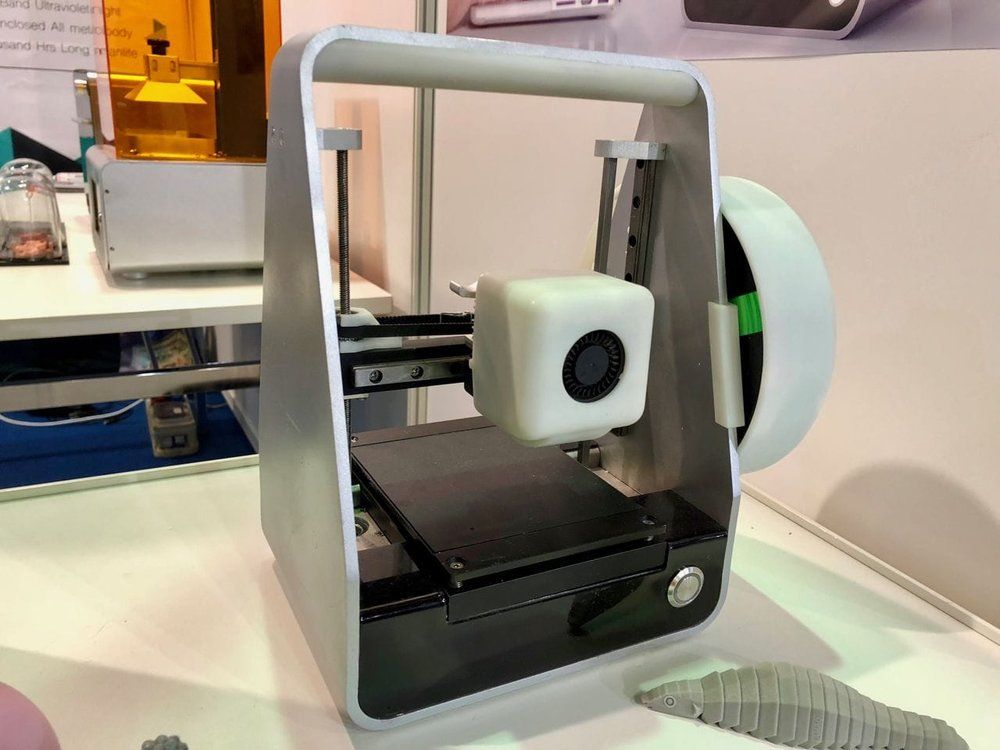 Wenext is dedicated to deliver the best services to satisfy different manufacturing needs at any time! Please feel free to try instant quoting on our website or contact us at [email protected] if you are interested.
Wenext is dedicated to deliver the best services to satisfy different manufacturing needs at any time! Please feel free to try instant quoting on our website or contact us at [email protected] if you are interested.
hardware selection and technology guide
What desktop SLS 3D printers are available on the market?
SLS (Selective Laser Sintering) is a 3D printing technology that uses a laser beam to sinter powdered material. This technique enables the 3D printing of detailed functional parts and prototypes.
Five to ten years ago, SLS technology was exclusive to large, industrial additive manufacturing systems. In recent years, a more compact SLS 3D printer niche has been slowly emerging, with lower prices and office-friendly formats.
Starting at around $6,000, these benchtop or desktop SLS 3D printers enable SMEs to access accurate and advanced in-house prototyping without having to rely on external 3D printing services.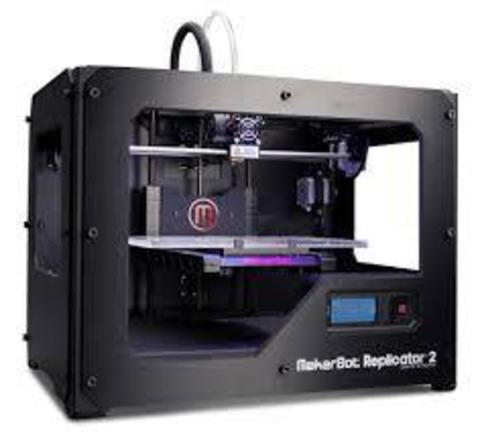 They are able to print with powder materials such as Nylon, TPE, and other thermoplastics.
They are able to print with powder materials such as Nylon, TPE, and other thermoplastics.
In this guide, we take a closer look at which desktop SLS printers are available on the market from brands like Sintratec, Sinterit, and Formlabs.
The best desktop SLS printers for professionals
| Brand | Product | Build size | Country | Price Approximate starting prices based on supplier-provided information and public data. Prices may vary by region, over time and do not include additional products or services (taxes, shipping, accessories, training, installation, …). | |
|---|---|---|---|---|---|
| Sintratec | Sintratec Kit | 110 × 110 × 110 mm4.33 × 4.33 × 4.33 in | – | $ 5,9994 990 €5,321 £894,187 ¥ | Quote |
| Natural Robotics | VIT SLS | 250 × 250 × 300 mm9.84 × 9.84 × 11.81 in | Spain | $ 12,90011 000 €11,443 £1,922,822 ¥ | Quote |
| Sinterit | Lisa | 150 × 200 × 150 mm5.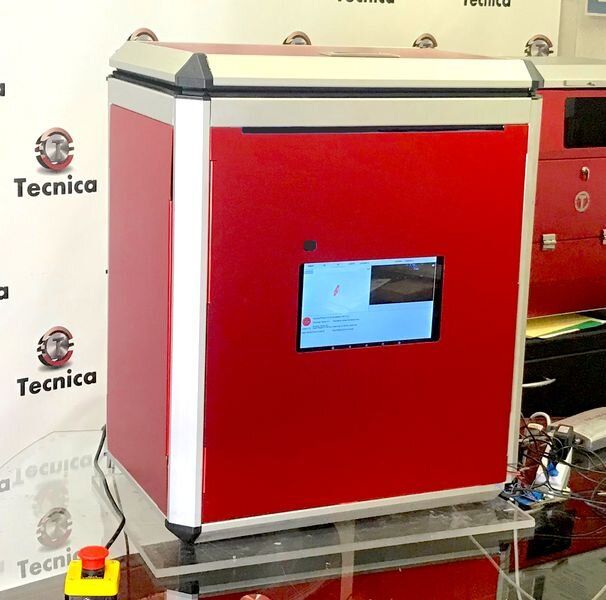 91 × 7.87 × 5.91 in 91 × 7.87 × 5.91 in | – | $ 12,9957 990 €11,527 £1,936,983 ¥ | Quote |
| Sinterit | Lisa Pro This product has been reviewed by our team. | 150 × 200 × 260 mm5.91 × 7.87 × 10.24 in | – | $ 17,99011 990 €15,958 £2,681,517 ¥ | Quote |
| Formlabs | Fuse 1 | 165 × 165 × 320 mm6.5 × 6.5 × 12.6 in | – | $ 18,49918 499 €16,409 £2,757,387 ¥ | Quote |
| RED ROCK 3D | RED ROCK | 180 × 180 × 180 mm7.09 × 7.09 × 7.09 in | – | upon request | Quote |
Expand to see more specs
The products in the table are ranked by price (low to high).
| Brand | Product | Build size | Country | Price Approximate starting prices based on supplier-provided information and public data. Prices may vary by region, over time and do not include additional products or services (taxes, shipping, accessories, training, installation, …). | |
|---|---|---|---|---|---|
| Sintratec | Sintratec Kit | 110 × 110 × 110 mm4.33 × 4.33 × 4.33 in | – | $ 5,9994 990 €5,321 £894,187 ¥ | Get a quote |
| Natural Robotics | VIT SLS | 250 × 250 × 300 mm9.84 × 9.84 × 11.81 in | Spain | $ 12,90011 000 €11,443 £1,922,822 ¥ | Get a quote |
| Sinterit | Lisa | 150 × 200 × 150 mm5.91 × 7.87 × 5.91 in | – | $ 12,9957 990 €11,527 £1,936,983 ¥ | Get a quote |
| Sinterit | Lisa Pro This product has been reviewed by our team. | 150 × 200 × 260 mm5.91 × 7.87 × 10.24 in | – | $ 17,99011 990 €15,958 £2,681,517 ¥ | Get a quote |
| Formlabs | Fuse 1 | 165 × 165 × 320 mm6.5 × 6.5 × 12.6 in | – | $ 18,49918 499 €16,409 £2,757,387 ¥ | Get a quote |
| RED ROCK 3D | RED ROCK | 180 × 180 × 180 mm7.09 × 7.09 × 7.09 in | – | upon request | Get a quote |
What is SLS (Selective Laser Sintering) technology?
Up until early 2014, Carl Deckard from Structured Polymers held a patent on Selective Laser Sintering 3D printing technology. Selective Laser Sintering (SLS) is part of the Powder Bed Fusion family of 3D printing technologies.
Selective Laser Sintering (SLS) is part of the Powder Bed Fusion family of 3D printing technologies.
How does Selective Laser Sintering work?
This technology uses a laser to sinter powdered material. In other words, a powerful laser beam selectively melts and fuses tiny powder particles together.
SLS 3D printing technology. Source: SculpteoOnce a layer is finished, more powder is rolled and spread onto the print bed. The process repeats itself layer after layer. The excess powder stays in the powder bed, thus automatically providing support for the object and its intricacies (though supports are still needed when it comes to metal 3D printing).
When the 3D printing process is finished and the powder bed has cooled down, the objects can be removed. The excess powder material is then to be brushed off to reveal the final part. Aside from powder removal, the parts require little to no post-processing for basic applications.
Overview of the best desktop SLS printers
The Sinterit Lisa is a plug-and-play desktop SLS 3D printer made by Polish manufacturer Sinterit. It is one of the most affordable SLS 3D printers actually available on the market.
It is one of the most affordable SLS 3D printers actually available on the market.
This 3D printer offers a relatively large build volume for a desktop 3D printer, and even more so for an SLS 3D printer in this price range. With the Lisa it is possible to 3D print flexible material (Flexa Black/Grey) or rigid, strong material (PA12).
Contact manufacturer Get a quote Add to comparison
In comparison with the regular Lisa, the Lisa Pro boasts various upgrades and features. For starters, the Pro version is equipped with a Nitrogen chamber, for wider material compatibility.
The Lisa Pro SLS printer also provides a bigger print volume as well as a larger touchscreen than the Lisa.
Our review at Sinterit headquarters: Sinterit Lisa Pro review
Contact manufacturer Get a quote Add to comparison
The Sintratec Kit started out as an Indiegogo crowdfunding campaign in 2014. It is one of the most affordable SLS 3D printers available today.
The Kit requires around four days of assembly.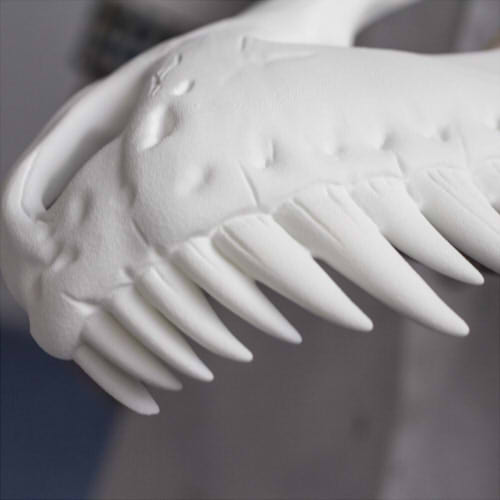 Users can freely adjust the laser’s height, speed, and temperature in order to try out different materials.
Users can freely adjust the laser’s height, speed, and temperature in order to try out different materials.
Contact manufacturer Get a quote Add to comparison
Formlabs, originally an SLA 3D printer manufacturer, introduced their first SLS 3D printer – the Fuse 1 – mid 2017. It is officially available since January 2021.
The printer works with Formlab’s PreForm software, and features two separate build chambers. This enables users to immediately launch a second build once the first job is complete.
After the printing process, the chamber can be directly placed as-is in the Fuse Sift, an all-in-one sieving machine that collects unused powder and prepares it for future builds by mixing it with fresh powder. The Fuse 1 can work with up to 70% of recycled powder, so each new build only requires 30% of fresh material (which costs around $100/kg).
Contact manufacturer Get a quote Add to comparison
Note: Natural Robotics launched the VIT SLS via Kickstarter in 2017. As of January 2021, some backers are stating that they still haven’t received their printers, although the company claims to be shipping products.
As of January 2021, some backers are stating that they still haven’t received their printers, although the company claims to be shipping products.
The VIT SLS offers a relatively large build volume compared to the other 3D printers in this range.
Contact manufacturer Get a quote Add to comparison
Note: This 3D printer is only available in a limited geographical region.
RED ROCK 3D is a new 3D printer manufacturer from Russia. Its RED ROCK SLS 3D printer offers a relatively large build volume compared to most of the other desktop SLS 3D printers in this selection.
Little information about this SLS 3D printer is available on the RED ROCK 3D website, which hasn’t been updated in a while (as of January 2021).
Contact manufacturer Get a quote Add to comparison
Compact industrial-grade SLS 3D printers: our picks
The following printers are larger than the benchtop SLS printers from our main selection but are still relatively compact considering the usual size of industrial SLS systems.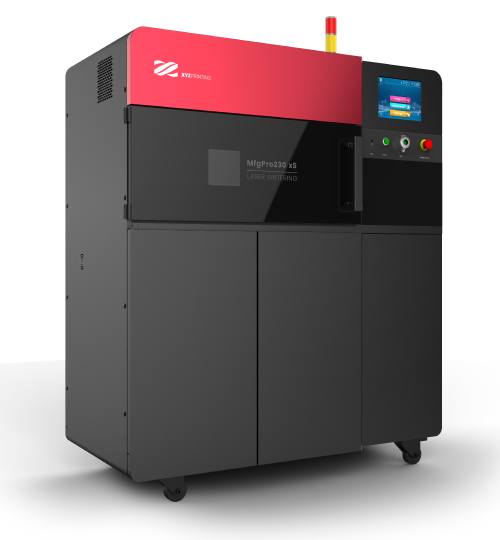
The Sintratec S2 is an all-in-one modular and scalable SLS 3D printing system with an onboard camera and large, intuitive touchscreen. It integrates a material preparation module as well as a depowdering station for semi-automatic workflows.
Optional stations include a blasting station, vortex unit, and a polishing station, enabling easier part post-processing.
Contact manufacturer Get a quote Add to comparison
The SnowWhite 2 features a powerful CO₂ laser that is able to sinter a range of materials including PA 12, PA 11, and TPU, as well as powder loaded with carbon or glass fiber or even aluminum.
All unused powder can be recycled. The printer can be powered up in ten minutes and the minimum amount of powder required to start a print is 300g.
Contact manufacturer Get a quote Add to comparison
XYZprinting’s range of products is one of the industry’s most diverse in terms of technology, suiting both consumers and businesses.
The MfgPro230 xS is an open-source system, meaning that its powerful 30W CO2 can print with any powder that’s available on the market. Hence, users can experiment with different types of Nylons and TPU materials, and even light-colored ones, which is not the case with entry-level SLS printers.
Hence, users can experiment with different types of Nylons and TPU materials, and even light-colored ones, which is not the case with entry-level SLS printers.
Contact manufacturer Get a quote Add to comparison
Released in 2020, the Gravity SLS 3D printer by Swedish manufacturer Wematter is the most recent printer in our selection. The printer features integrated powder recycling and easy material handling with user-friendly packaging.
Wematter’s cloud-based slicing software automatically optimizes the build area, packing parts efficiently and as close together as possible thanks to advanced algorithms.
Contact manufacturer Get a quote Add to comparison
Benefits and limits of SLS 3D printing
Main benefits of SLS 3D printing
No need for support: 3D printing complex and functional parts
Since unused powder remains in the powder bed, it naturally acts as support for the following sintered layers. This support, which is present all over, allows the 3D printing of very complex and/or functional parts and prototypes.
This support, which is present all over, allows the 3D printing of very complex and/or functional parts and prototypes.
It’s also possible to 3D print objects within objects, also known as nesting. This is not possible with other 3D printing technologies such as FFF and FDM (extrusion) or SLA and DLP (resins).
Multiple layers of parts to be 3D printed with SLS technology. Source: SinteritWaste reduction
It is possible to re-use powder that has not been sintered. This significantly reduces material waste and costs compared to other 3D printing techniques. Also, no material is wasted on support structures.
Main limitations of powder SLS 3D printing
Just like any technology, SLS 3D printing has its downsides.
Porosity/rough surface
SLS 3D printed objects are porous, though it is possible to apply sealant to alter their sandy, granular-like surfaces.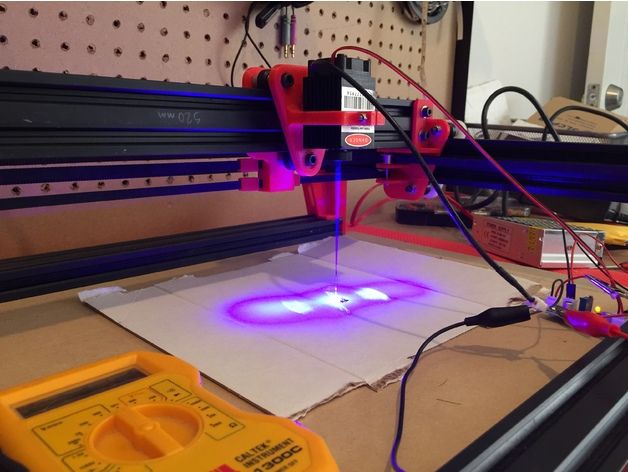
Expensive material
The price for one kilogram of PA12 powder can range from around $55 to about $180.
Logistics and post-processing
Due to the volatile nature of powder, extra caution is required when handling the material and taking the final 3D print out of the powder bed. The prints must be depowdered; either manually, which is time-consuming, or with a dedicated powder removal solution.
SLS vs FDM vs SLA
SLS vs FDM (FFF)
Compared to Fused Filament Fabrication, SLS can:
- achieve higher quality prints
- provide thinner layers and wall thicknesses
- generate complex 3D prints without the need for support
However, Selective Laser Sintering 3D printers offer much less material choice (and colors).
SLS vs SLA
Compared to stereolithography 3D printing technology, Selective Laser sintering offers:
- thinner wall thicknesses
- complex 3D prints without support structures
That being said, SLS 3D prints have rougher surfaces than SLA 3D prints.
SLS 3D printing: what materials are available?
Main desktop SLS 3D printing powders
Most desktop SLS 3D printers use Polyamide (PA) powdered material, also known as Nylon. The main PA powders available on the market are:
- Nylon PA12
- Nylon PA11
Then, there are composite or “charged” powders, meaning that different materials are mixed with PA. The most common are the following:
- Alumide: PA mixed with aluminum (shiny, metallic appearance)
- Carbonamide: PA reinforced with carbon fiber (stiff and lightweight)
- Nylon 3200: PA filled with glass (more chemical and heat resistant than PA12)
There is also PEBA 2031, a flexible, rubbery, and resistant plastic powder. Some manufacturers produce elastic 3D printing powders (such as Sinterit’s Flexa Black and Flexa Grey) to 3D print shock absorbers, clothing parts, bellows, etc.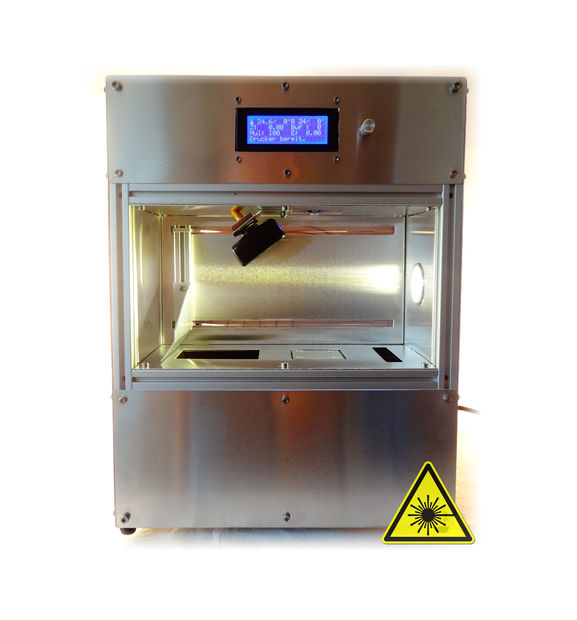
Nylon SLS 3D printing material
Nylon, or Polyamide (PA), is the most common powdered material used by SLS 3D printers. It boasts many interesting characteristics:
- Lightweight: Polyamide is a lightweight 3D printing material.
- Robust: this material can bear loads or be used for mechanical parts.
- Flexible: Nylon can bend and come back to its original form.
- Resistance: PA offers good heat and chemical resistance.
Manufacturers generally sell their own, branded powder material.
SLS 3D printing in general
Desktop SLS printers are limited to plastics when it comes to material choice. However, when using larger, more expensive powder industrial 3D printers, it is possible to 3D print metal powder. Some industrial SLS 3D printers are also able to 3D print ceramics.
What is SLS 3D printing. How does an SLS 3D printer work? Overview of additive technologies.

What is SLS?
Hello everyone, Friends! 3DTool is with you!
In this article, we will talk in detail about one of the most promising technologies 3D printing . Selective laser sintering.
Selective Laser Sintering (SLS) is an additive manufacturing process belonging to a broad family of wafer synthesis methods. In SLS, a laser selectively sinters polymer powder particles, fusing them together to create layer after layer. Granular thermoplastic polymers are used as construction material. Options for such devices can be considered in our catalog. For example, the Sintratec 3D printer. nine0004
This technology is used both for prototyping functional polymer products and for integration into small production runs, as it offers complete design freedom, high precision and produces parts with good and stable mechanical properties, unlike FDM or SLA .
Naturally, as in any other case, the possibilities of technology can be used to the full only if its key advantages and disadvantages are taken into account, so let's take a closer look at its features and principle of operation. nine0004
SLS printing process
How does SLS work?
The SLS fabrication process works as follows:
I. The powder chamber, as well as the entire printable area, is heated just below the melting temperature of the resin, after which the leveling blade distributes a thin layer of powder over the build platform.
II. The CO2 laser scans the contour of the next layer and selectively sinters (melts) the polymer powder particles. The cross section of the component is scanned ( is sintered ) completely, so the part is monolithic.
III. When the layer is completed, the work platform moves down and the blade re-coats the surface with powder.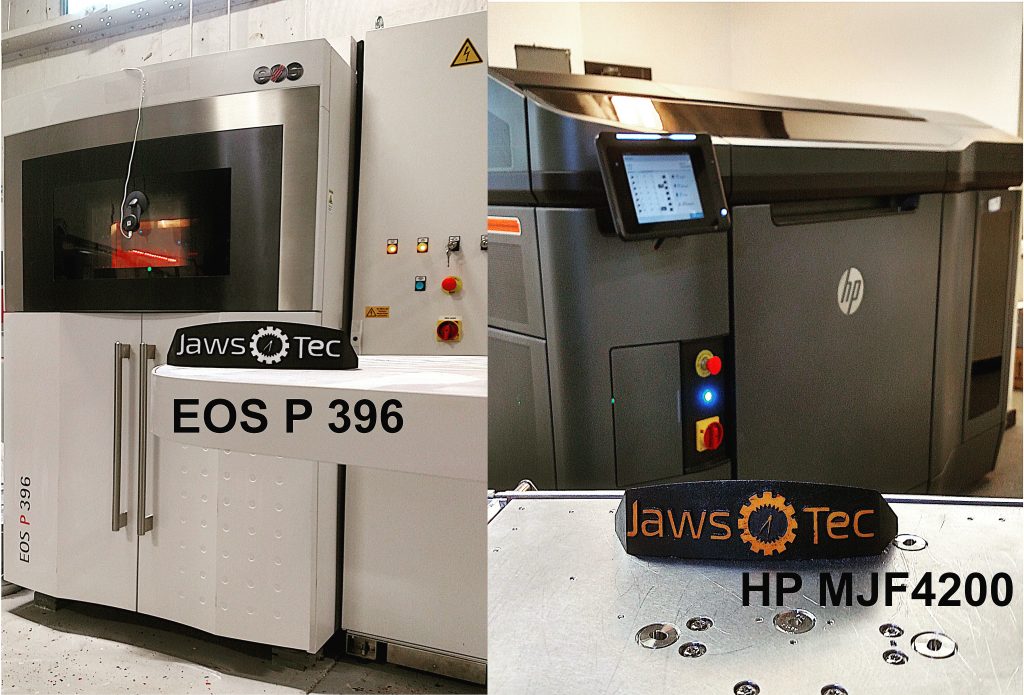
The process is repeated until the entire part is completed.
After printing, the part is completely sealed in the non-sintered powder, so the chamber and powder must cool before being removed. Cooling down can take a significant amount of time, up to 12 hours. Then the resulting part is cleaned of powder residues with compressed air. The unsintered powder is collected for further reuse. nine0004
Schematic diagram of an SLS 3D printer.
SLS printing specifications In SLS, almost all print options are set by the printer manufacturer. The default layer height for is 100-120 µm . For example, the Sintratec 3D printer we mentioned above allows you to print a much thinner layer, the layer thickness declared by the manufacturer varies from 50 to 150 micron.

The main advantage of method SLS is that the part does not need supports . In this case, the non-sintered powder plays the role of the necessary support. For this reason, the SLS method can print geometries of any shape that are impossible to print with any other additive or subtractive manufacturing method.
When printing with this method, it is very important to use as much of the printable area as possible, especially in small-scale production. Regardless of the amount of detail in the printable area, if the overall height is the same, printing will take the same amount of time. This is because it is the recoating step that determines the total print time ( the laser scanning and sintering itself is very fast ), and the printer has to cycle through the same number of layers. Also, you need to take into account the time for refilling the hopper with powder, because the same amount is poured into the chamber, regardless of the size of the printed part.
Layer sintering
When using method SLS , the sintering strength of the layers to each other is excellent. This means that printed on SLS printer parts have almost isotropic mechanical properties.
As an example, the mechanical properties of samples printed on SLS using standard polyamide powder ( PA12 or Nylon12 ), the most commonly used material in SLS printing , are shown in the table in comparison with the properties of solid nylon:
Parts printed on SLS have superior tensile strength and modulus comparable to solid material, but are more brittle ( their elongation at break is much lower than ). This is due to the internal porosity of the resulting part.
!A typical SLS part has a porosity of about 30%!
Porosity gives parts printed on SLS a characteristic grainy surface. This porosity also means that the parts can easily absorb water and are easy to paint. At the same time, such parts require special post-processing if they are to be used in a humid environment. nine0004
At the same time, such parts require special post-processing if they are to be used in a humid environment. nine0004
Shrinkage and deformation
SLS parts are subject to shrinkage and deformation: when the newly sintered layer cools, its dimensions decrease and internal stress accumulates in it, due to which the underlying layer is pulled upwards.
Shrinkage of 3 to 3.5% is typical for SLS printing of and printer operators must take this into account during model preparation.
Large flat surfaces are most prone to deformation. This problem can be mitigated slightly by orienting the part vertically on the build platform. But still, the best way to reduce deformation is to minimize the thickness of the flat areas of the part, and add cutouts to the model where the design allows. These actions will also reduce the overall cost of the part, as less material will be used. nine0004
Finished sls-part with embedded embedded elements.
Excessive caking
Over-sintering occurs when excess heat around the contour of the part melts the unsintered powder around. This is fraught with loss of detail on small objects such as slots and holes.
Excessive sintering depends on both element size and wall thickness. For example, a slot with a width of 0.5mm or hole diameter 1mm will print successfully on a wall thickness of 2mm but will not print if the wall thickness is 4mm or more. As a general rule, slits from to 0.8mm and holes from to 2mm can be safely printed in SLS without fear of excessive caking.
Powder removal
Since printing method SLS no support required, parts with hollow sections print quickly and accurately.
Hollow sections in this case reduce the weight and cost of the part, as less material is ultimately used. But you will need to make outlet holes in the part to remove unsintered powder from the internal cavities. The general recommendation in this case is to add at least 2 outlet holes with a diameter of at least 5 mm to your part.
But you will need to make outlet holes in the part to remove unsintered powder from the internal cavities. The general recommendation in this case is to add at least 2 outlet holes with a diameter of at least 5 mm to your part.
If high rigidity is required, the parts must be printed solid. An alternative here would be to make the structure hollow, with no outlets. In this way, the powder will be compacted tightly into the part, increasing its mass and providing some additional support when mechanical loads increase, without affecting print time. Also, instead of one solid internal cavity, you can add a honeycomb structure ( similar to the infill patterns used in FDM ) to further increase the rigidity of the model. Laying out the part in this way will also help reduce warping.
Removing powder from an SLS part
General materials SLS
The most commonly used material for SLS is Polyamide 12 (PA 12) , also known as Nylon 12 . At the moment, there are more and more materials with different properties for SLS 3D printing every day, for example, elastic polymers are represented by TPE powder and its analogues. Other technical thermoplastics such as PA11 and PEEK are also available but are not as widely used.
At the moment, there are more and more materials with different properties for SLS 3D printing every day, for example, elastic polymers are represented by TPE powder and its analogues. Other technical thermoplastics such as PA11 and PEEK are also available but are not as widely used.
As an example, you can see the list of materials used in our catalog: Sintratec Powder Sls.
Polyamide powder can be supplemented with various additives ( such as carbon fibers, glass fibers or aluminum ) to improve the mechanical and thermal properties of the printed part. Materials supplemented with additives are usually more brittle and have higher anisotropy. nine0004
Post-processing
SLS produces parts with a powdery, grainy finish that is easy to paint. The appearance of SLS printed parts can be improved to a very high standard using a variety of post-processing methods such as polishing, classic painting, spray painting and varnishing.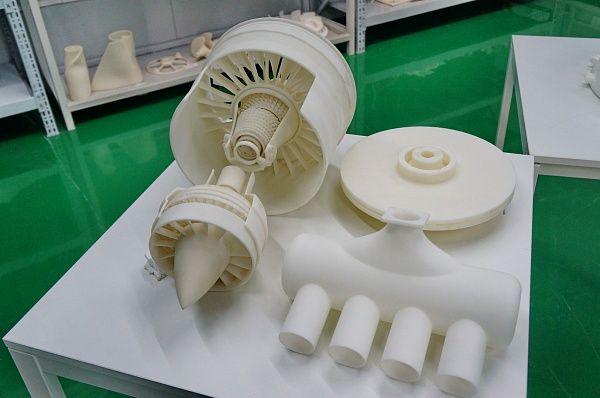 Their functionality can also be improved by applying a waterproof coating or metal coating. nine0004
Their functionality can also be improved by applying a waterproof coating or metal coating. nine0004
Advantages and limitations of SLS
Summarizing the above, the key advantages and disadvantages of the technology are given below:
- SLS parts have good, isotropic mechanical properties, making them ideal for functional parts and prototypes.
- SLS does not require support, so parts with complex geometries can be easily printed.
- SLS manufacturing capabilities are excellent for small to medium series production. nine0288
- Only industrial SLS systems are currently widely available, so lead times are longer than other 3D printing technologies such as FDM and SLA.
- SLS parts have a grainy surface and internal porosity that may require post-treatment if a smooth surface or water resistance is desired.
- SLS cannot accurately print large flat surfaces and small holes as they are prone to warping and warping.
 nine0288
nine0288
The main characteristics of SLS technology are shown in the table below:
And that's all we have! We hope the article was useful to you.
You can purchase SLS 3d printers, consumables for them, as well as any other 3d printers and CNC machines, by contacting us:
• By email: [email protected]
• By phone: 8(800)775-86-69
• Or on our website: http://3dtool.ru
Also, don't forget to subscribe to our YouTube channel:
Subscribe to our groups in social networks:
In contact with
Comparison of 3D printing technologies: FDM, SLA and SLS
Additive manufacturing or 3D printing reduces costs, saves time and expands the technological possibilities in product development. 3D printing technologies offer versatile solutions for applications ranging from rapid concept and functional prototypes in the field of prototyping to fixtures and clamps or even final parts in manufacturing.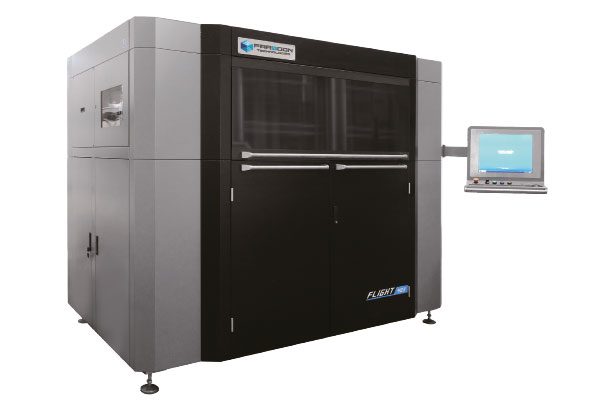 nine0004
nine0004
Over the past few years, high resolution 3D printers have become more affordable, more reliable and easier to use. As a result, more companies have been able to use 3D printing technology, but choosing between different competing 3D printing solutions can be difficult.
Which technology is right for your needs? What materials are available for her? What equipment and training is needed to get started? What are the costs and payback? nine0004
In this article, we take a closer look at three of today's most well-known plastic 3D printing technologies: Fused Deposition Modeling (FDM), Stereolithography (SLA), and Selective Laser Sintering (SLS).
Choosing between FDM and SLA 3D printer? Check out our detailed comparison of FDM and SLA technologies.
You can download this high resolution infographic here.
VIDEO MANUAL
Can't find the 3D printing technology that best suits your needs? In this video tutorial, we compare Fused Deposition Modeling (FDM), Stereolithography (SLA), and Selective Laser Sintering (SLS) technologies in terms of the top factors to consider when purchasing. nine0004
nine0004
Watch Video
Fused Deposition Modeling (FDM), also known as Fused Filament Manufacturing (FFF), is the most widely used form of 3D printing at the consumer level, fueled by the rise of consumer 3D printers. On FDM printers, models are made by melting and extruding a thermoplastic filament, which the printer's nozzle applies layer by layer to the model being built.
The FDM method uses a range of standard plastics such as ABS, PLA and their various blends. It is well suited for making basic experimental models, as well as for quickly and inexpensively prototyping simple parts, such as parts that are usually machined. nine0004
FDM models often show layer lines and may have inaccuracies around complex features. This sample was printed on a Stratasys uPrint FDM industrial 3D printer with soluble support structures (price starting at $15,900).
FDM printers have the lowest resolution and accuracy of SLA or SLS and are not the best option for printing complex designs or parts with complex features.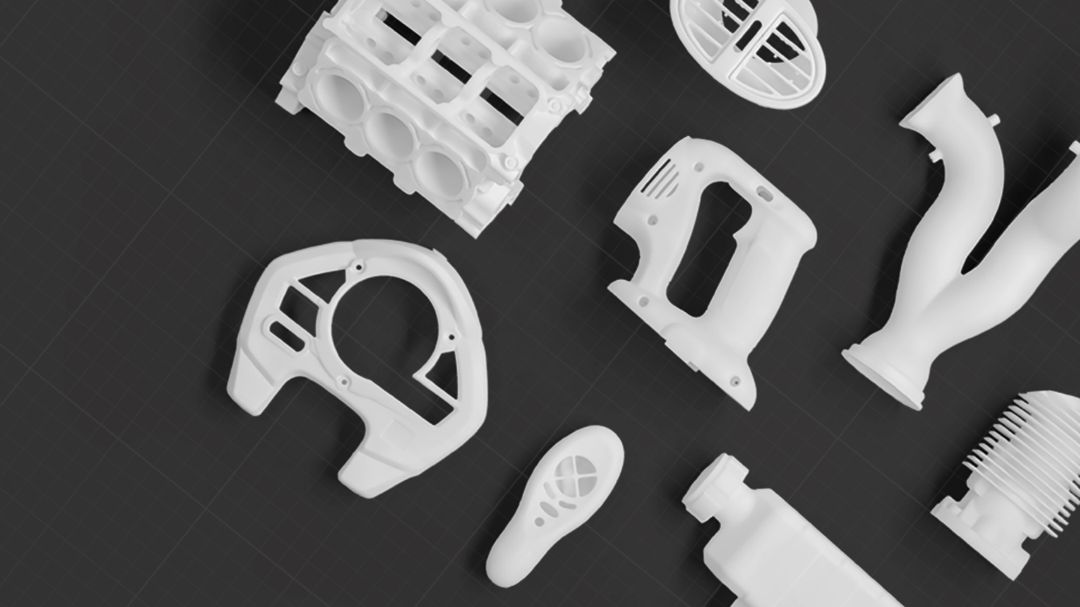 Surface quality can be improved by chemical and mechanical polishing processes. To address these issues, industrial FDM 3D printers use soluble support structures and offer a wider range of engineering thermoplastics, but they are also expensive. nine0004
Surface quality can be improved by chemical and mechanical polishing processes. To address these issues, industrial FDM 3D printers use soluble support structures and offer a wider range of engineering thermoplastics, but they are also expensive. nine0004
FDM printers do not handle complex designs or parts with complex features (left) compared to SLA printers (right).
Invented in the 1980s, stereolithography is the world's first 3D printing technology and is still one of the most popular technologies among professionals today. SLA printers use a process called photopolymerization, which is the conversion of liquid polymers into hardened plastic using a laser.
See stereolithography in action.
Models printed on SLA printers have the highest resolution and accuracy, the sharpest detail and the smoothest surface of all plastic 3D printing technologies, but the main advantage of the SLA method is its versatility. Materials manufacturers have developed innovative formulas for SLA polymers with a wide range of optical, mechanical and thermal properties that match those of standard, engineering and industrial thermoplastics. nine0004
nine0004
Models created using SLA technology have sharp edges, a smooth surface and almost invisible layer lines. This sample was printed on a Formlabs Form 3 Desktop Stereolithographic 3D Printer (price starting at $3499).
SLA is an excellent option for making highly detailed prototypes that require tight tolerances and smooth surfaces such as molds, templates and functional parts. SLA technology is widely used in industries ranging from engineering and design to manufacturing, dentistry, jewelry, modeling, and education. nine0004
White Paper
Download our in-depth white paper to learn how SLA printing works, why thousands of professionals use it today, and how this 3D printing technology can help your work.
Download white paper
free sample
Experience Formlabs print quality firsthand. We will send a free 3D printing sample directly to your office.
Request a free sample
Selective laser sintering is the most common additive manufacturing technology used in industry.
Selective Laser Sintering (SLS) 3D printers use a high power laser to sinter fine polymer powder particles. The unsprayed powder supports the model during printing and eliminates the need for special support structures. This makes SLS ideal for complex geometries, including internal features, grooves, thin walls, and negative taper. Models produced using SLS printing have excellent mechanical characteristics: their strength can be compared with the strength of injection molded parts. nine0004
Models created with SLS technology have a slightly rough surface, but almost no visible layer lines. This sample was printed on the Formlabs Fuse 1 SLS workshop 3D printer (price starting at $18,500).
The most common selective laser sintering material is nylon, a popular engineering thermoplastic with excellent mechanical properties. Nylon is light, strong and flexible, resistant to impact, heat, chemicals, UV radiation, water and dirt. nine0004
Nylon is light, strong and flexible, resistant to impact, heat, chemicals, UV radiation, water and dirt. nine0004
Due to the combination of low part cost, high productivity and widely used materials, SLS is a popular method of engineering functional prototyping and a cost effective alternative to injection molding in cases where production runs are limited.
White paper
Looking for a 3D printer to create durable, functional models? Download our white paper to learn how selective laser sintering (SLS) technology works and why it is popular in 3D printing for functional prototypes and end-use products. nine0434

 nine0441
nine0441 Either way, you should choose the technology that best suits your business. Prices have dropped significantly in recent years, and today all three technologies are offered in compact and affordable systems.
3D printing costing doesn't end with initial equipment costs. Material and labor costs have a significant impact on the cost of each part, depending on the application and production needs. nine0441

INTERACTIVE
Try our interactive ROI tool to see how much time and money you can save by printing with Formlabs 3D printers.
Calculate savings
FDM, SLA and SLS prototype ski goggle frames (from left to right).
We hope this article has helped you narrow down your search for the 3D printing technology best suited to your needs.